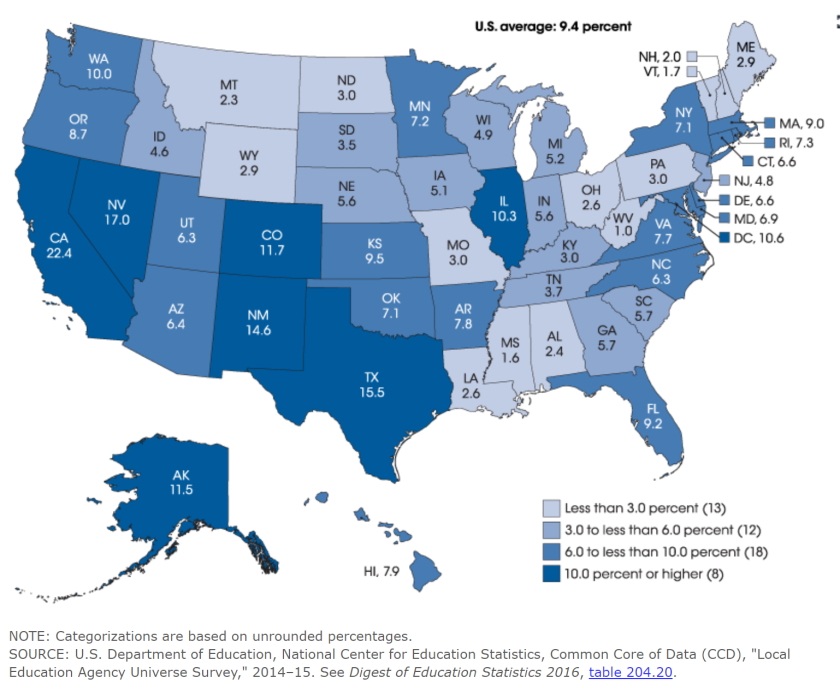When I tell people that I’m minoring in Teaching English as a Second Language (TESL) the first question they usually ask is where I’m planning to travel to teach English. Although I’ve definitely thought about teaching English abroad at some point, the reason I have my TESL minor is so I can better teach children who already live in the US and are learning English. Since teaching English to people already in the US seems to be confusing concept for some, I looked up the National Center for Educational Statistics page on English Language Learners. I think the data they present makes a strong argument for why US teachers need a background in TESL.
First, what is an English Language Learner(ELL)? ELLs are students who speak a language other than English at home and participate in some kind of language program within their school to help them reach English proficiency. These students are labeled as everything from “Limited English Proficiency Students” to “Emergent Bilinguals” depending on the school or district, but they all fall under the term ELL.
According to the most recent data on the National Center of Educational Statistics webpage (which is a few years off, since it’s from 2015) 9.4 percent or 4.5 million of US students are ELLs. With class sizes of around 25, that means if all the ELLs in the US were distributed evenly, every classroom would have 2 or 3 students still in the process of learning the language of instruction.
Of course, ELLs are not distributed evenly across the US. Due to a variety of reasons, some states have a lot more than others. Check it out on the graph below:

This image shows the percentage of K-12 public school students who have been identified as ELLs in each state. The darker the color, the higher percentage of ELLs in that state. The state with the highest percentage of ELLs is California, with 22.4 percent. The state with the lower percent in West Virginia, at 1.0 percent. Every other state falls somewhere in between. Utah, the state where I’ll probably start teaching, has 6.3 percent. That’s below the national average, but still means there’s a lot of students in need of teachers who are trained in TESL.
Reporting that Utah has 6.3 percent ELLs doesn’t mean that every school in Utah has 6 ELLs for every 100 students enrolled at the school. The percent will vary based on the city and neighborhood the school is in. The article reports that cities tend to have a higher percent of ELLs than suburbs or rural areas. So it makes sense that many of my neighbors in my White suburban neighborhood questioned why I would need a TESL minor if I’m planning to stay in Utah. They didn’t see the need for it in their neighborhood school, and assumed other schools in Utah would have similar demographics.
The report I read left me with some questions. Since the data was collected in 2015, I wondered how it might have changed in the last two years. I also was interested in the information in one of the footnotes, which reads “Data do not include students who were formerly identified as ELLs but later obtained English language proficiency.” In my TESL classes, we’ve talked about how common it is for students to test out of ELL programs, or be marked as having achieved English language proficiency, too early. Although their conversational English may be proficient, their academic language may be far behind that of their peers. I wondered how many of those students there are in the US, and if they were counted what the average percent of ELLs would then be.